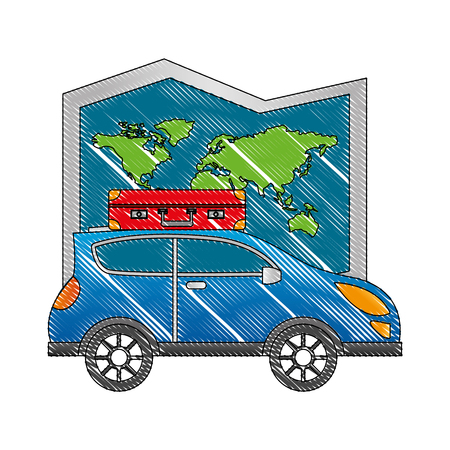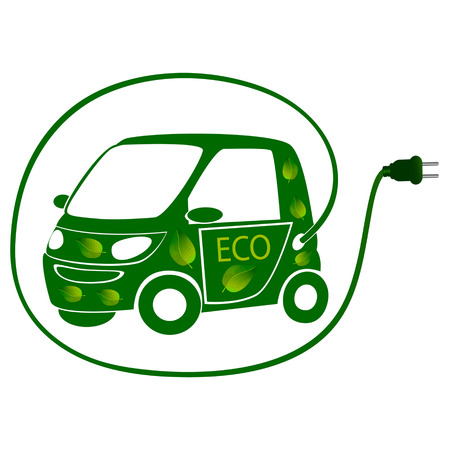1. Introduction: Setting the Green Drive in Motion
India’s urban landscapes are vibrant, bustling mosaics where tradition meets modernity—rickshaws jostle alongside SUVs, and chai stalls line up next to metro stations. Yet, with this energetic city life comes significant mobility challenges, especially as air quality plummets and fuel demands soar across metros like Delhi, Mumbai, and Bengaluru. In the face of growing environmental concerns and traffic congestion, exploring alternative mobility solutions is no longer just an option but a necessity. Multi-fuel and hybrid vehicles emerge as promising answers to India’s quest for sustainable transport. They have the potential to address not only pollution but also the fluctuating cost and supply of conventional fuels, making them uniquely relevant to the Indian context. As our cities rapidly expand and the population’s aspirations grow, these advanced vehicle technologies could redefine urban commuting while supporting India’s larger mission for a greener tomorrow.
2. Current Landscape: From CNG Rickshaws to Electric Rides
Indias mobility scene is a vibrant mix of tradition and innovation, reflecting both the countrys diverse needs and its push toward greener alternatives. Over the past decade, the adoption of multi-fuel and hybrid vehicles has seen steady progress, particularly in urban centres where pollution and fuel costs are pressing concerns. The journey began with the humble CNG auto-rickshaw—a familiar sight on the bustling streets of Delhi, Mumbai, and Bangalore. These three-wheelers, running on compressed natural gas (CNG), have become the backbone of affordable public transport while offering a cleaner alternative to diesel or petrol counterparts.
Today, Indias vehicle market is witnessing a dynamic shift towards electric mobility. The government’s FAME (Faster Adoption and Manufacturing of Hybrid and Electric Vehicles) scheme has provided both incentives and visibility for electric vehicles (EVs), making them more accessible to everyday Indians. While electric cars are gaining ground in metropolitan areas, e-rickshaws and two-wheelers have quickly carved out their niche in Tier 2 and Tier 3 cities. Meanwhile, hybrid vehicles—combining traditional internal combustion engines with battery-powered motors—are slowly entering the mainstream, appealing to drivers seeking better fuel efficiency without full dependence on charging infrastructure.
Multi-Fuel & Hybrid Penetration at a Glance
| Vehicle Type | Common Fuels/Technologies | Penetration Level | Popular Models/Brands |
|---|---|---|---|
| CNG Auto-Rickshaws | CNG | High in metros | Bajaj RE, Piaggio Ape |
| Electric Two-Wheelers | Lithium-ion batteries | Rapidly increasing | Ather, Ola Electric, Hero Electric |
| E-Rickshaws | Lead-acid/Li-ion batteries | Widespread in small towns/cities | Kinetic Green, Mahindra Treo |
| Hybrid Cars | Petrol + Electric motor | Niche but growing | Toyota Camry Hybrid, Maruti Suzuki Grand Vitara Hybrid |
Cultural Acceptance & Local Nuances
The success of these alternative vehicles also hinges on their alignment with Indian sensibilities—affordability, reliability, and adaptability to congested roads. While many Indians still rely on age-old petrol scooters or diesel SUVs for long journeys or rural commutes, there is growing openness to experimenting with hybrids and EVs as daily city rides. Whether its the unmistakable green-and-yellow of a CNG rickshaw weaving through traffic or the silent glide of an e-bike along Marine Drive, India’s current landscape illustrates a nation ready for sustainable mobility—but always with a uniquely local twist.

3. Government Policies and Local Incentives
India’s journey towards cleaner mobility is deeply influenced by proactive government interventions at both the central and state levels. Recognising the urgent need to tackle air pollution and reduce dependence on imported fossil fuels, policymakers have rolled out a suite of policies, incentives, and subsidies to accelerate the adoption of multi-fuel and hybrid vehicles. Chief among these is the FAME (Faster Adoption and Manufacturing of Hybrid and Electric Vehicles) India scheme. This flagship initiative offers direct subsidies to manufacturers and end-users for electric, hybrid, and multi-fuel vehicles, with a keen focus on public transport and last-mile connectivity solutions. The FAME scheme not only reduces upfront purchase costs but also supports indigenous manufacturing under the ‘Make in India’ mission, thereby nurturing local innovation.
At the state level, governments are crafting their own unique incentives tailored to local needs and aspirations. States like Maharashtra, Delhi, and Tamil Nadu have introduced additional waivers on road tax, registration fees, and even electricity tariffs for EV charging—giving both consumers and businesses more reasons to embrace cleaner alternatives. In a city like Bengaluru, known as India’s Silicon Valley, special parking privileges and green corridor access for hybrid and electric vehicles reflect an urban commitment to sustainable growth. These targeted incentives are especially significant for Indian cities grappling with worsening air quality indices and ever-increasing congestion.
Yet, the real impact of these measures lies in their ability to change mindsets—encouraging traditional two-wheeler owners in Chennai or auto-rickshaw drivers in Ahmedabad to seriously consider switching to greener options. As manufacturers respond to this policy-driven demand with a wider range of affordable multi-fuel and hybrid models, it becomes clear that government support is not just about financial incentives; it’s about charting a new course for India’s urban mobility future, one where sustainability is woven into everyday journeys.
Urban & Rural: A Tale of Two Mobilities
Indias vast expanse is marked by stark contrasts between its bustling urban jungles and the sprawling rural heartlands. These differences are especially pronounced when it comes to mobility solutions and the adoption prospects of multi-fuel and hybrid vehicles. On one hand, metropolises like Mumbai, Delhi, and Bengaluru are grappling with severe air pollution, traffic congestion, and rising fuel costs. On the other, villages and small towns often face infrastructural gaps, unreliable fuel supply chains, and limited public transport options. The interplay of these factors shapes a unique landscape for alternative vehicle technologies.
Urban Opportunities & Challenges
Cities provide fertile ground for early adoption of multi-fuel and hybrid vehicles. Urban consumers are more likely to be environmentally conscious, have better access to new technologies, and benefit from government incentives for clean mobility. However, infrastructural bottlenecks such as insufficient charging stations or CNG outlets, as well as high upfront costs, pose significant barriers. Additionally, city dwellers demand compact vehicles suited for congested roads—an expectation manufacturers must address.
Rural Realities
In contrast, rural India presents both unique hurdles and untapped potential. The primary challenges include patchy road infrastructure, lack of reliable electricity (critical for plug-in hybrids), and limited awareness about alternative fuel options. However, rural users often value fuel flexibility due to fluctuating diesel or petrol availability—a key advantage for multi-fuel vehicles. Their preference for rugged utility vehicles also opens avenues for hybrid technology tailored to local needs.
Comparative Overview: Urban vs Rural Mobility
| Urban Areas | Rural Areas | |
|---|---|---|
| Main Challenge | Pollution & Congestion | Poor Infrastructure & Fuel Access |
| User Awareness | High | Moderate to Low |
| Vehicle Preference | Compact Cars/Scooters | Utility Vehicles/Tractors |
| Adoption Drivers | Government Incentives, Eco-consciousness | Fuel Flexibility, Cost Savings |
Towards an Inclusive Transition
The future success of multi-fuel and hybrid vehicles in India hinges on bridging the urban-rural divide through targeted policies and region-specific product development. By understanding the nuanced aspirations and constraints of both segments, stakeholders—from policymakers to automakers—can catalyse an inclusive green mobility revolution across Bharat.
5. Cultural Acceptance and Roadside Realities
Delving into the heart of India’s automotive landscape requires more than just a technical overview; it demands a deep understanding of the cultural tapestry that influences every decision on the road. Indian consumers are shaped by generations of tradition, frugality, and a unique relationship with their vehicles—often seeing them as not just machines, but as companions and even status symbols within their communities. The adoption of multi-fuel and hybrid vehicles faces both opportunities and challenges rooted in these local mindsets.
The Importance of Trust
Trust plays a pivotal role in the acceptance of any new technology in India, especially when it comes to personal mobility. Past experiences with unreliable products or insufficient after-sales service have made Indian car buyers cautious. Building credibility for multi-fuel and hybrid vehicles hinges on transparent communication, robust warranties, and visible proof of reliability under real Indian conditions—from the congested lanes of Chandni Chowk to the monsoon-washed highways of Kerala.
Traditional Preferences and Local Attitudes
Many Indian motorists still lean towards tried-and-tested petrol or diesel engines, associating them with ease of repair, availability of fuel, and familiarity among roadside mechanics—the ‘dost’ (friend) who can fix anything at a street corner garage. There is also a strong value-for-money mindset; new technologies must demonstrate tangible savings and resilience against unpredictable fuel prices to be considered viable alternatives.
Building Bridges Through Awareness
To foster widespread cultural acceptance, there is a pressing need for educational initiatives tailored to local realities. Manufacturers and policymakers must engage communities through regional languages, relatable success stories, and hands-on demonstrations that demystify how hybrid systems work or how multi-fuel technology adapts to diverse Indian terrains. Collaborations with grassroots influencers—from auto-rickshaw unions to city cab associations—can help dispel myths and nurture trust at the neighborhood level.
The Roadside Mechanic: A Key Stakeholder
No discussion about Indian automotive culture is complete without acknowledging the iconic ‘roadside mechanic’. Their opinions shape consumer confidence and their ability to service new vehicle types will determine long-term acceptance. Training programs, easy-to-access repair manuals in Hindi or Tamil, and partnerships with local workshops can bridge knowledge gaps, ensuring that innovation does not bypass this vital layer of India’s urban ecosystem.
Ultimately, the journey toward mainstream adoption of multi-fuel and hybrid vehicles in India is as much about winning hearts as it is about advancing technology. Embracing traditional values while inspiring curiosity for cleaner mobility solutions will set the stage for sustainable transformation on India’s vibrant roads.
6. The Road Ahead: Opportunities and Green Hurdles
Forecasting Economic and Environmental Prospects
India’s journey towards multi-fuel and hybrid vehicles is poised at a crossroads of promise and challenge. The economic potential is significant—reduced fuel import bills, increased domestic manufacturing under the Make in India initiative, and the creation of green jobs can help boost the nation’s GDP. Environmentally, widespread adoption could lower urban air pollution levels, especially in cities like Delhi, Mumbai, and Bengaluru where AQI often soars beyond safe limits. By embracing cleaner technologies, India stands to make real progress toward its National Clean Air Programme (NCAP) goals and international climate commitments.
Addressing Infrastructural and Policy Challenges
The road ahead is not without its potholes. While hybrid and multi-fuel technologies are gaining ground, India’s charging infrastructure for hybrids, availability of alternate fuels like CNG, LPG, biofuels, and hydrogen remains patchy—especially outside Tier-1 cities. Policy clarity is crucial; the government must streamline subsidies, tax benefits under FAME II, and state-level incentives to encourage both consumers and automakers. Localising component supply chains will also reduce costs and dependency on imports, ensuring technology is both accessible and affordable for aam aadmi.
Creating Greener Indian Cities and Highways
To truly envision sustainable mobility, Indian urban planners must integrate these technologies into the fabric of city life. Dedicated green corridors for hybrid vehicles, retrofitting public transport with multi-fuel engines, and incentivising last-mile connectivity solutions can transform congested cityscapes into cleaner living spaces. On the highways connecting cities from Chennai to Chandigarh or Jaipur to Guwahati, establishing robust refuelling and charging stations will be key to seamless intercity travel without range anxiety.
Community Engagement: The Heart of Change
Ultimately, successful transition depends on grassroots awareness campaigns in local languages—Hindi, Tamil, Bengali, Marathi—to dispel myths about new technology reliability and safety. When auto-rickshaw drivers in Lucknow or fleet operators in Kochi embrace these changes as partners rather than passive recipients, India’s green mobility revolution will gather unstoppable momentum.
The coming years hold vast promise. With determined policy action, community engagement, and infrastructural investment, India can pave the way for cleaner air and smarter transport—not just for a select few but for every citizen navigating the vibrant chaos of our cities and highways.


